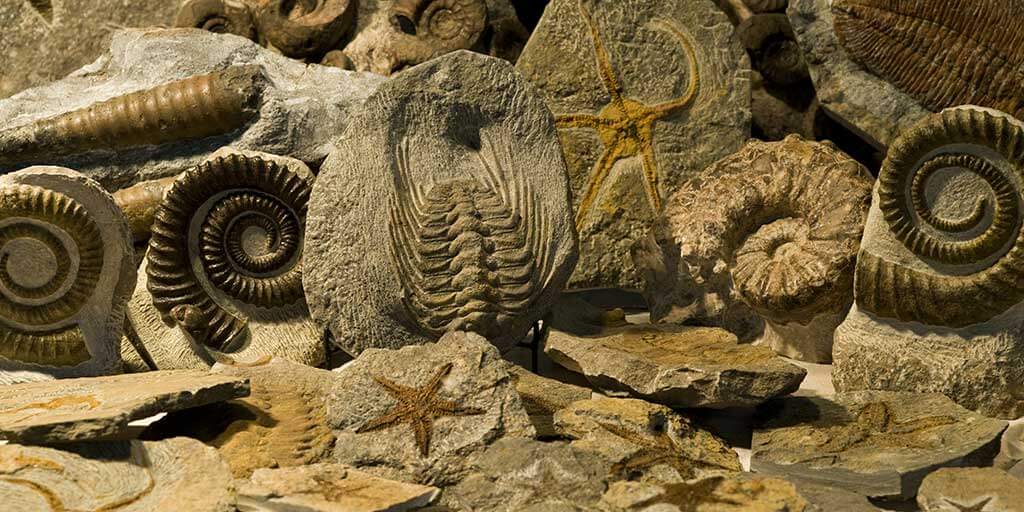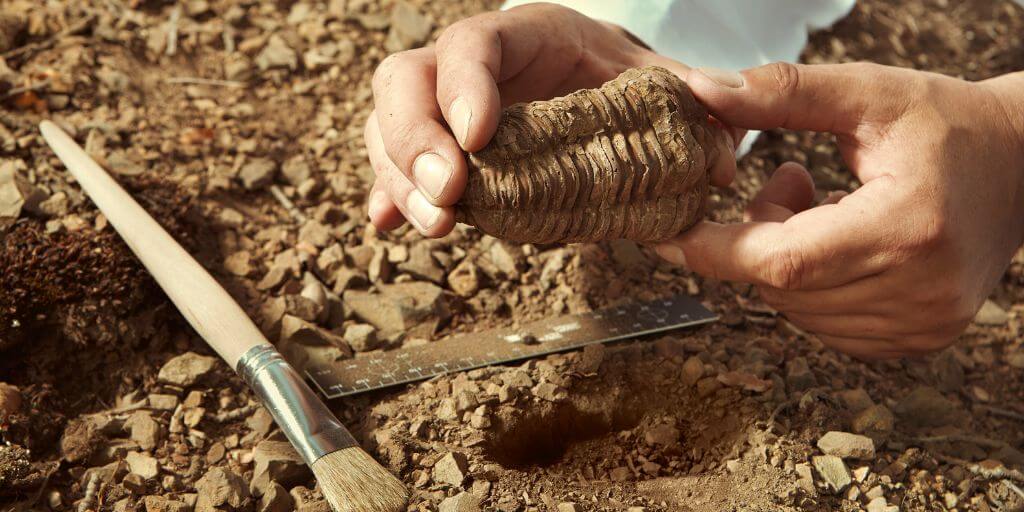The Significance of Fossils in the Burgess Shale

Dr. Stephen Meyer is a former geophysicist who received his PhD in the Philosophy of Science from Cambridge University. He has written several bestselling books including, Signature in the Cell and Darwin’s Doubt. In Darwin’s Doubt, Dr. Meyer tells how Charles Darwin himself doubted the ability of his own theory to explain a crucial piece of evidence, and how that doubt has grown up to create a major crisis in evolutionary thinking today. Darwin was troubled by a major event in the history of life known as the Cambrian explosion in which the first major groups of animals appeared abruptly in the Burgess Shale fossil record.
Dr. John Ankerberg: As discoveries about the fossil record came to light, what paleontologists found in the Burgess Shale was astonishing.
Transcription of clip:
Narrator: In the summer of 1910 Walcott found a fossiliferous band in the ridge. After blasting a quarry, the geologist and his family unearthed thousands of exquisitely preserved specimens from soft-bodied animals previously unknown to science. He called the site the Burgess Shale.
Simon Conway Morris: There in Burgess Shale, especially the lower level which Walcott first exploited, the preservation is miraculous. It’s astonishing. We find trilobites, of course, but we find many, many other sorts of arthropods, almost none of which are ever found in a typical Cambrian assemblage. So we can treat them effectively as being soft-bodied. They have almost no chance of being fossilized in normal circumstances.
Narrator: Geologists believe that the animals of the Burgess Shale were buried quickly and alive by an avalanche of sediment that created an airtight tomb and prevented the decay of soft body parts like eyes, legs and internal organs.
Simon Conway Morris: Now, in the animal Marrella, very often there’s a sort of what we call a dark stain. And I find this very intriguing because that dark stain evidently is the body contents are oozing out. So in other words, the animal is beginning to decay, and then something stops it.
Narrator: The Burgess Shale was once part of a massive reef in the Pacific Ocean, a haven for a menagerie of life that thrived at the edge of what is now the North American continent. Throughout long periods of geologic upheaval, tectonic forces elevated these rocks and the fossils they bear more than 7,000 feet above sea level. Here the basic body plans of major animal groups that still exist today, and many others now extinct, made their first appearance in the fossil record so suddenly that biologist Richard Dawkins noted, “It is as though they were just planted there without any evolutionary history.”
Dr. John Ankerberg: Alright, Stephen, why were the Burgess Shale fossils such a surprise?
Dr. Stephen Meyer: Well, they were a major challenge to Darwin’s theory. And they challenged Darwin’s theory in two different ways. First, they challenged his picture of the history of life. As I mentioned before, Darwin had depicted the history of life as a great branching tree where the animal forms at the top of the tree represented all the forms of life that exist today. At the very base of the tree there was represented by a single one celled organism, and then all the branches, connecting branches, represented how that single first organism gradually morphed and changed and became many different things over long periods of geological time. And so the first animal forms, according to Darwin, should have arisen very gradually through a series of small incremental variations and steps. But instead they appear very abruptly. So rather than a tree-like picture of the history of life, the Cambrian fossil record documents something much more like a lawn or an orchard of separate trees that never quite connect at the base.
And so you have this sudden appearance that challenges the picture of the history of life. It also challenges Darwin’s idea of the mechanism by which living forms would have arisen. His idea was that natural selection, the mechanism of natural selection, would have acted on small incremental variations that would have accumulated over many, many, many generations, and therefore that life would have arisen very, very gradually over time. The first complex animals would have arisen very gradually. But instead what we see in the fossil record is this abrupt appearance of complexity, of complex animal forms. And this is also very contrary to Darwin’s thinking about how,… the mechanism of how these organisms would have arisen.
Dr. John Ankerberg: Dr. Meyer, why were these fossils in the Burgess Shale so challenging to Darwin’s theory of evolution?
Dr. Stephen Meyer: Well, the fossils of the Burgess Shale, as well as all the other Cambrian fossil beds that have been discovered, raised two mysteries, create two mysteries for Darwin’s theory; and they were the source of his doubt about the ability of his theory to explain the whole of the evidence. And the first mystery I call the “mystery of the missing fossils.” And the film clip there documents it very well: that you have the first major complex animal forms arising in the Cambrian, and as you look in the lower pre-Cambrian strata you don’t find the ancestral precursors to those fossils that you would expect to find if Darwin’s picture of the history of life is true.
And the second mystery is closely related to it, and I call this the “mystery of how you build an animal.” How would the evolutionary process build an animal? According to Darwin, the process by which complex animal life arose was the process of natural selection acting on small incremental variations. And Darwin understood that the variations would need to be small and incremental; because if there was a large change in the form of an animal from one generation to the next, that would be something like a birth defect or a deformity. And he understood that those kind of gross changes would always be deleterious or detrimental. So instead the changes that would occur from generation to generation, that would be the source of the evolutionary change over time, had to be very small and incremental, which meant that the process needed to take a great deal of time.
And instead, what we see in the fossil record is this abrupt appearance, without the ancestors and without any evidence of that slow gradual trial and error process having occurred over time. So the Cambrian explosion raises two mysteries, the mystery of the missing fossils and the mystery of what is the process by which all this complexity came about.
Editor’s note. This has been excerpted and lightly edited from our television series, “The Mystery of the Missing Fossils.”








